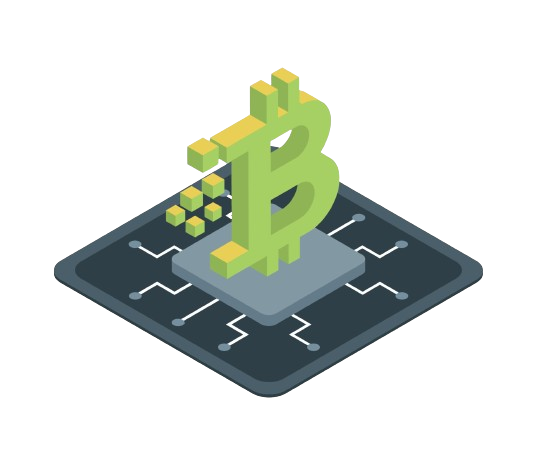
Swing trading aims to capture short-term price movements in Bitcoin over periods of a few days to weeks. The promise of quick profits comes with substantial risks, as Bitcoin’s volatility can swiftly turn winning trades into losers. Mastering swing trading requires experience to understand its challenges and pitfalls. In this guide, we explore the most common errors swing traders make and how through vigilance and discipline, these mistakes can be avoided to improve profitability.
Overtrading
Overtrading refers to an excessive trading frequency beyond what a strategy dictates. It stems from boredom or the need to feel constantly engaged with markets. Swing trading requires patience to wait for optimal setups. Overtrading skips analysis and leads to taking low-probability trades. Sticking to defined criteria for quality setups based on statistical backtesting results and avoiding trading for excitement reduces overtrading tendencies. The best swing traders sit on their hands for days or weeks waiting for ideal entries. Overtrading is simply high-cost entertainment.
Revenge Trading
Revenge trading refers to aggressively entering risky positions after losing trades in an attempt to immediately win back losses. It is driven by emotions of anger, frustration, and desperation. This reckless cycle rarely generates profits but rather increases losses rapidly. After a losing swing trade, recalibrating emotions before assessing the next high-probability setup is critical. Also, appropriate stop losses help limit loss amounts and prevent desperation from creeping in during losing streaks. Steady rules-based trading defeats revenge trading.
Overtrading and revenge trading have similar roots in lack of discipline and impatience. The solution lies in executing swing trades mechanically based on quantified entry and exit criteria rather than acting on emotions and impulses.
Lack of Stop Losses

Stop losses and limit downside when trades go wrong. Failing to use stop losses gives losing positions excessive room to decay account equity. Stops must be implemented on every swing trade based on technical levels like support that indicate the trade thesis is invalidated.
Using mental stops is inadequate – actual stop market or limit orders must be set when entering positions, enforced automatically regardless of the temptation to override stops during losses. Stop losses and defend against irrational decisions to “ride out” losing trades that rarely recover.
Inadequate Hold Times
The very nature of swing trading means trades may take days or weeks to fully play out in the desired direction. Impatience leads to prematurely exiting before profits fully materializing or letting winning trades turn into losers when the position is closed too early. Conversely, greed causes holding onto positions well past the optimum exit point only to see gains erased. Mechanically following exit rules based on technical levels, volatility spikes, or time thresholds overcomes biased human judgment. Swing trading requires letting trades mature to capture the meat of potential runs.
Lack of Profit Targets
Profit targets complement stop losses, locking in gains based on upside price objectives. Without profit targets, traders wait indefinitely for the perfect exit. Meanwhile, proven winners turn to losers in fast-moving Bitcoin markets. Set realistic profit targets based on technical resistance levels, risk/reward ratios, and overall volatility to exit with gains still in hand. It helps overcome the tendency to be greedy, hoping for even higher profits but ending up squandering paper gains altogether.
Inadequate Position Sizing

Swing trading demands balancing risk management with maximizing gains. Too-small positions fail to produce meaningful gains in the right trades. Overlarge positions increase the pain of losses. Position sizing should be based on risk tolerance and account size to withstand normal trading drawdowns.
As accounts grow, position sizes can increase proportionally. Insufficient capital restricts proper position sizing and profitability. Sizing also determines required stop distances – larger sizing allows tighter stops. Balance aimed returns against loss tolerance when swing trading.
Lack of Risk/Reward Plans
Before entering trades, swing traders must delineate exact upside profit targets and maximum downside loss limits based on technical levels. This quantifies the risk/reward proposition – the potential gain versus the possible loss. Favorable risk/reward setups offer larger realistic profit targets than the initial risk exposed. A 1:2 ratio means aiming for $200 in gains for a defined max $100 risk. Without pre-planned risk/reward calculations, trades are executed blindly and are more likely to end up with losses.
Overleveraging
Using excessive leverage to swing trade increases loss risks. While leverage amplifies gains, losses become magnified too. Even veteran traders get crushed using 50-100x leverage when Bitcoin’s value is reversed. Keep leverage modest at 5x or below, use stops, and size positions properly. Have adequate capital -undercapitalization drives overleveraging attempts to compensate. Swing trade only what you can afford to lose using capital not required for basic needs.
Lack of Strategy
The most successful swing traders follow disciplined, defined strategies governing every trade’s entry, exit, stops, and sizing. Without methodical rules, most swings end up losses due to inadequate planning. Build swing trading strategies through backtesting, and quantifying technical patterns that generate reliable profits long-term. Avoid impulsive discretionary trades based only on intuition. Swing trading is methodical, mechanical, and repetitive – not freewheeling gambling.
Ignoring Technical Analysis
Swing traders rely on technical indicators to time entries and exits. The most common indicators like moving averages, RSI, MACD, and Bollinger Bands have stood the test of time. But many traders ignore indicators signaling a setup has soured and a reversal may be imminent. Adhere to indicator signals even if directional bias remains. Avoid cherry-picking only the signals that align with sentiment. Technical analysis underpins swing trading strategy – respect its guidance.
Lack of Discipline and Emotional Control

Swing trading requires stoicism to act rationally when emotions run high during trades. Traders must follow strategy rules, avoid biases, and execute stops and profit targets mechanically regardless of opinion.
Greed, fear, impatience, frustration, and other feelings cannot sway trading actions. This demands tremendous discipline, experience, and mental toughness. Traders lacking those traits fare better with longer-term investing strategies rather than active swing trading.
Avoiding Swing Trading Pitfalls
The common thread among swing trading pitfalls is a lack of planning, discipline, and emotional control. But with knowledge, practice, and commitment to implementing structure around trades, these mistakes can be overcome. Define rules for entries, exits, and stop losses before the market opens – never deviate. Size positions appropriately based on account size and targets. Set realistic profit objectives. Follow indicators closely to both guide entries and warn of reversals. Limit total trades to focus only on the best high-reward setups. Swing trade like a machine systematically, not swinging from opinions and impulses. Mastering psychology and mechanics refines skills over time through an analytical process. Bitcoin’s volatility challenges even the strongest minds. But controlling emotions and actions separate those gaining from the swings versus those getting swung out of profits.
Conclusion
Swing trading can rapidly grow accounts when executed consistently and rationally. However undisciplined actions based on emotions and bias lead most traders into pitfalls jeopardizing performance. Lacking comprehensive trading strategies with entries, exits, and stops cements failure. With proper risk management, metrics-driven trade planning based on backtesting, and utmost mechanistic discipline during both winning and losing trades, swing traders can rise above the crowd and master Bitcoin’s wild swings using the mind as the ultimate weapon.